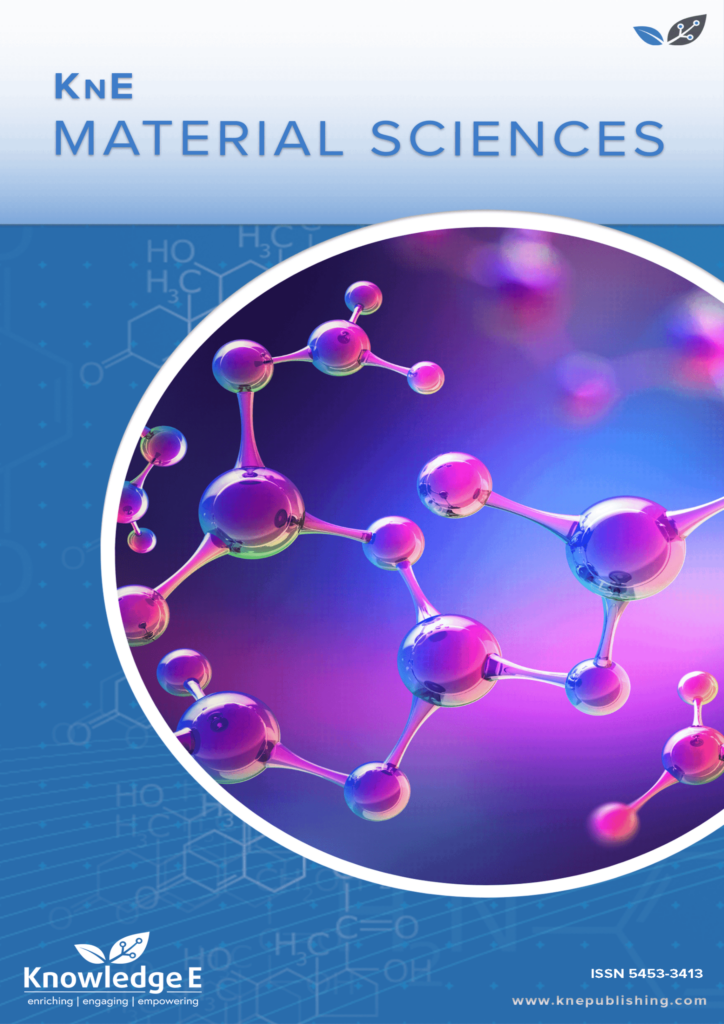
KnE Materials Science
ISSN: 2519-1438
The latest conference proceedings on physical materials, energy materials, electrical materials.
Application of TiNi Dental Implants with Permeable Porosity in Patients Rehabilitation with Different Adentia Options
Published date: Jul 17 2017
Journal Title: KnE Materials Science
Issue title: Shape Memory Biomaterials and Implants in Medicine (SMBIM)
Pages: 211-218
Authors:
Abstract:
The results of the dental prosthetics based on intraosseous implants made of porous nickelid titanium in 650 patients aged 15-75 years have been presented. The atrophy of the alveolar processes was eliminated by means of the osteogenic tissue grown in the iliac crest thickness having the structure between the hyaline cartilage and coarse-fibered bone tissue. Satisfactory functioning of the orthopedic constructions within 7-8 and more years was observed in 496 (76,3%) patients, the advantages of this treatment methods have been specified.
References:
[1] А.А. Kulakov, Surgical aspects of patients’ rehabilitation with dentition defects using different dental implant systems, Thesis abstract of Doctor of Medical sciences [in Russian], Moscow, 1997.
[2] R.Sh. Gvetadze, E.K. Krechina, Y.Y. Shirokiv et al., Immediate loading in dental implant prosthodontics, Clinical Stomatology. 4 (2015) 50-54.
[3] V.Y. Nikolsky, Stomatology 2003: Materials of the 5th Russian Scientific Forum, Aviaizdat, Moscow, 2003, pp. 72-73.
[4] T.G. Robustova, Dental implantation (surgical aspects) [in Russian], Medicine, Moscow, 2003.
[5] A. Barone, U. Covani, Maxillary alveolar ridge reconstruction with nonvascularized autogenous block bone: clinical results, J. Oral Maxillofac. Surg. 65 (2007) 2039-2046.
[6] C.M. Becker, T.G. Wilson Jr, O.T. Jensen, Minimum criteria for immediate provisionalization of single-tooth dental implants in extraction sites: A 1-year retrospective study of 100 consecutive cases, J. Oral Maxillofac. Surg. 69 (2011) 491-497.
[7] B.E. Aarts, J. Convens, E.M. Bronkhorst et al., Cessation of facial growth in subjects with short, average, and long facial types – Implications for the timing of implant placement, Craniomaxillofac. Surg. 43 (2015) 2106-2111.
[8] T. Sumida, N. Otawa, Y.U. Kamata et al., Custom-made titanium devices as membranes for bone augmentation in implant treatment: Clinical application and the comparison with conventional titanium mesh, J. Craniomaxillofac. Surg. 43 (2015) 2183-2188.
[9] N. Casap, S. Nadel, E. Tarazi et al. Evaluation of a navigation system for dental implantation as a tool to train novice dental practitioners, J. Oral Maxillofac. Surg. 69 (2011) 2548-2556.
[10] M. Yamazaki, S. Kanzaki, K. Tominaga et al., Evaluation of secondary bone grafting of the alveolar cleft in adult cleft lip and palate patients, J. Oral Maxillofac. Surg., Med. Pathol. 24 (2012) 86-89.
[11] M. Sánchez-Siles D. Muñoz-Cámara N. Salazar-Sánchez et al., Incidence of peri-implantitis and oral quality of life in patients rehabilitated with implants with different neck designs: A 10-year retrospective study, J. Cranio-maxillofac. Surg. 43 (2015) 2168-2174.
[12] A. Acocella, R. Bertolai, E. Ellis III et al., Maxillary alveolar ridge reconstruction with monocortical fresh-frozen bone blocks: A clinical, histological and histomorphometric study, J. Craniomaxillofac. Surg. 40 (2012) 525–533.
[13] K. Bertl, P. Heimel, M. Rökl-Riegler et al., MicroCT-based evaluation of the trabecular bone quality of different implant anchorage sites for masticatory rehabilitation of the maxilla, J. Cranio-Max.-Fac. Surg. 43 (2015) 961-968.